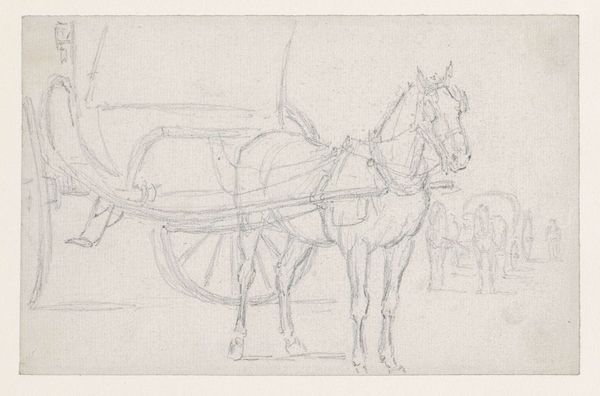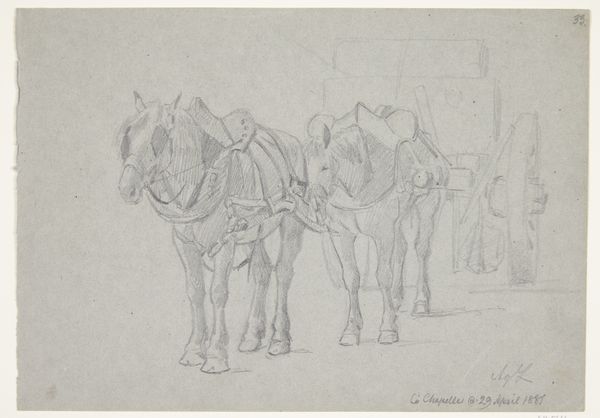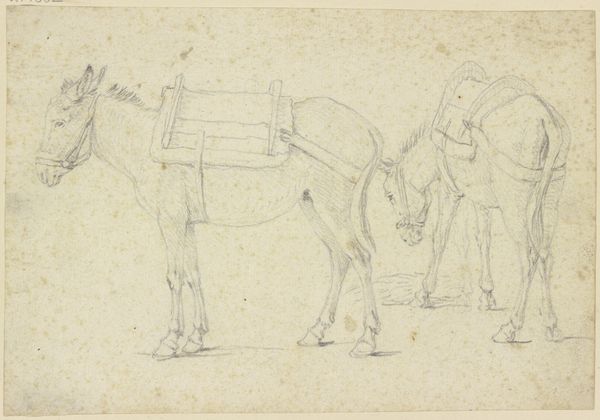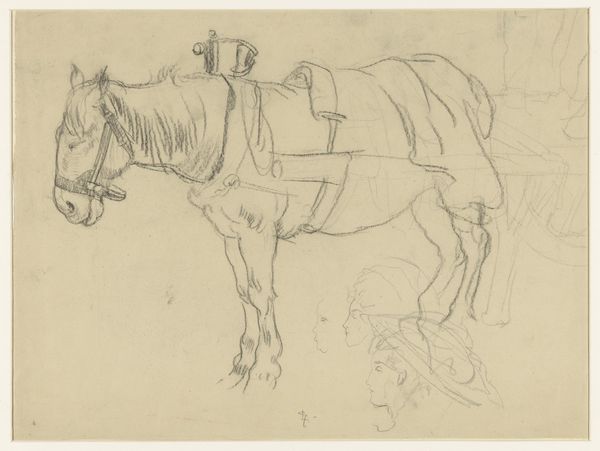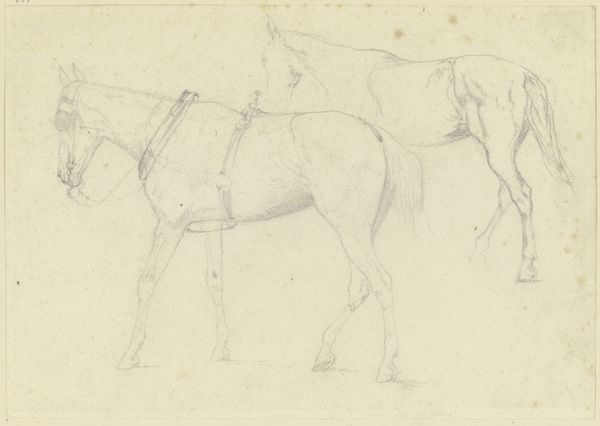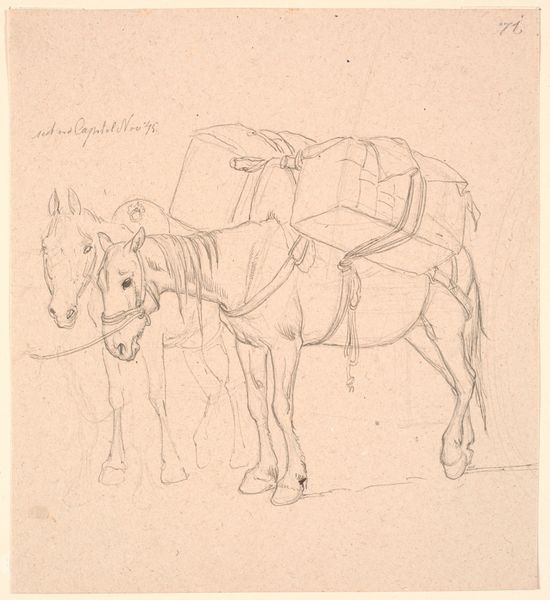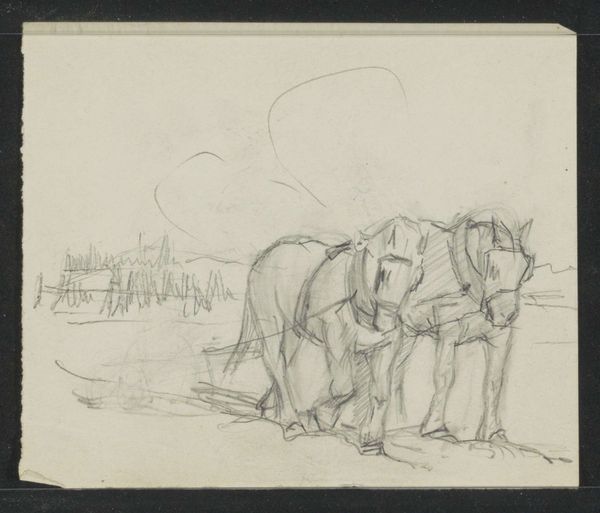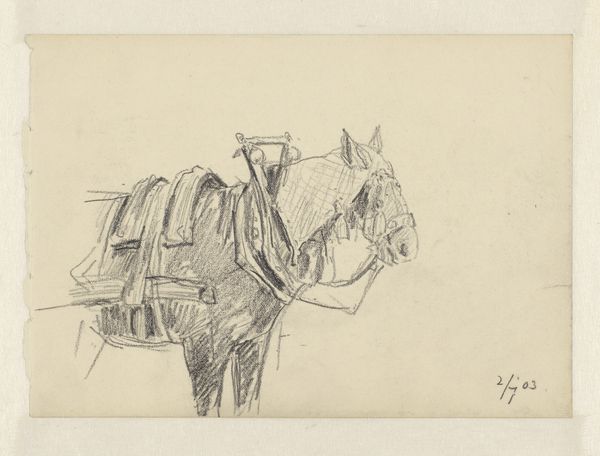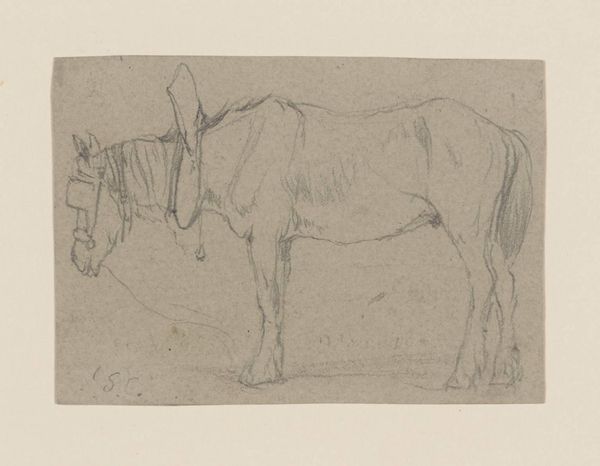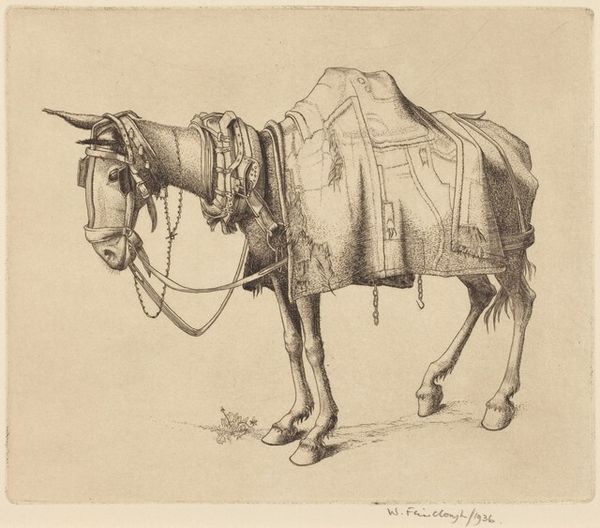
drawing, pencil
#
drawing
#
toned paper
#
light pencil work
#
pencil sketch
#
landscape
#
figuration
#
personal sketchbook
#
idea generation sketch
#
sketchwork
#
ink drawing experimentation
#
pen-ink sketch
#
pencil
#
sketchbook drawing
#
sketchbook art
#
realism
Dimensions: overall: 23.1 x 29.2 cm (9 1/8 x 11 1/2 in.)
Copyright: National Gallery of Art: CC0 1.0
Editor: This is Robert Austin’s "The Trace Horse," dating to around 1921. It’s a pencil drawing that feels very much like a preliminary sketch. I’m curious about what stands out to you in this piece. Curator: The most striking aspect, materially speaking, is the obvious attention to the horse's harness and trappings. Look at the detail rendered versus the horse’s form itself. This points to an emphasis on the tools of labor, rather than just the laborer. How do you see that emphasis impacting our reading of the work? Editor: That’s interesting. So instead of romanticizing the animal, Austin focuses on what *makes* it a work animal? Curator: Precisely! It challenges traditional pastoral scenes. The pencil medium itself further emphasizes this – a readily available tool, a means of sketching out ideas without the pretense of high art materials like oil paint. It grounds the artwork. Editor: I see what you mean. The quick lines suggest an almost utilitarian approach, documenting the working apparatus. Curator: Exactly. It begs the question: What's being 'produced' here? Is it merely a drawing, or is Austin documenting a specific relationship – the exploitation of animal labor – for potential repurposing? He seems more interested in production itself rather than artistic outcome. Consider the additional harness drawings as well. They seem purely functional in intent. Editor: So, this isn’t just a drawing of a horse, but a study of work and its instruments. I never would have considered it that way! Curator: Looking at the art world with that mindset shifts one's perspective on not just the final form, but the conditions of that form’s creation and meaning.
Comments
No comments
Be the first to comment and join the conversation on the ultimate creative platform.
